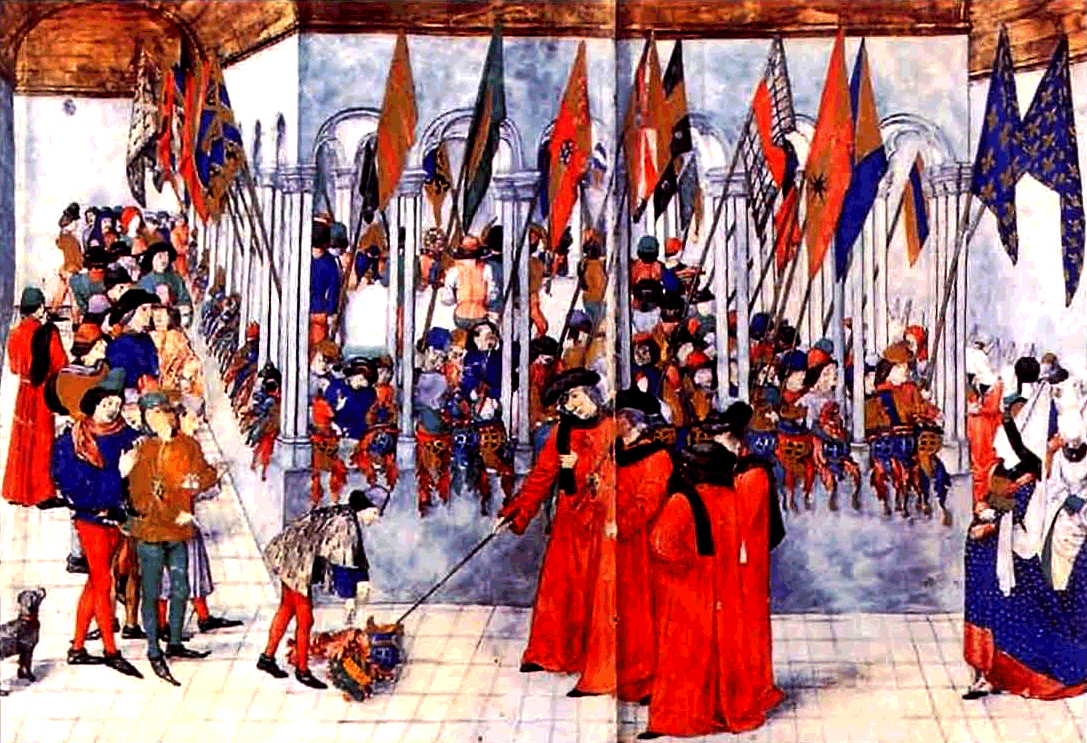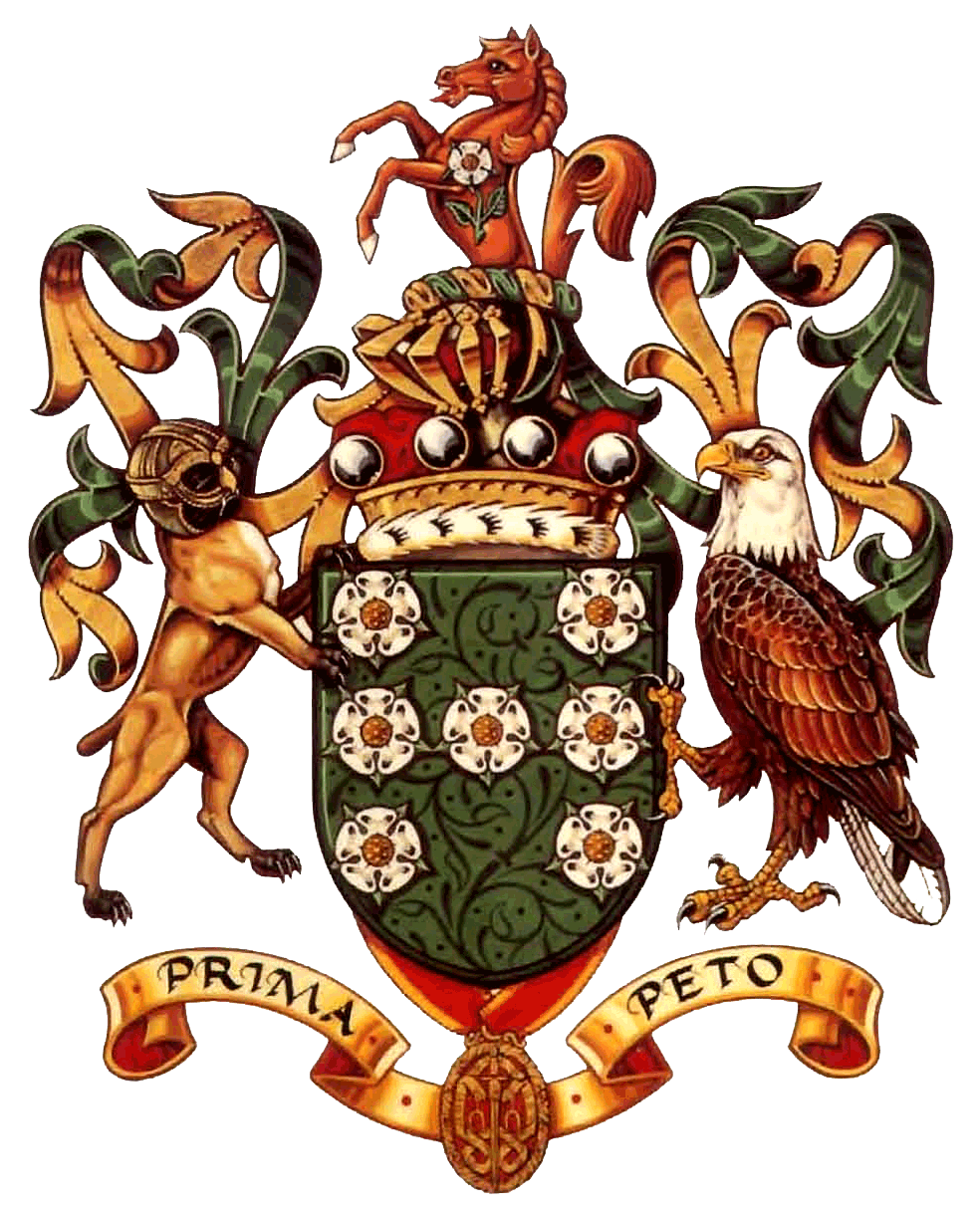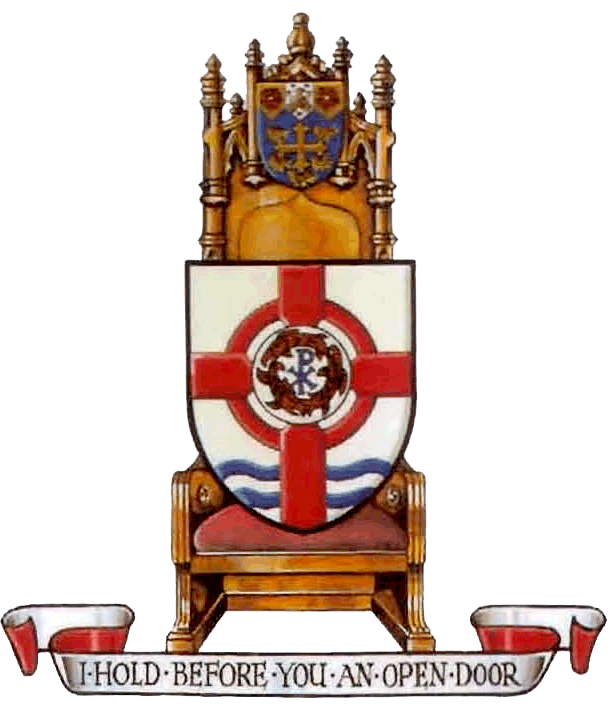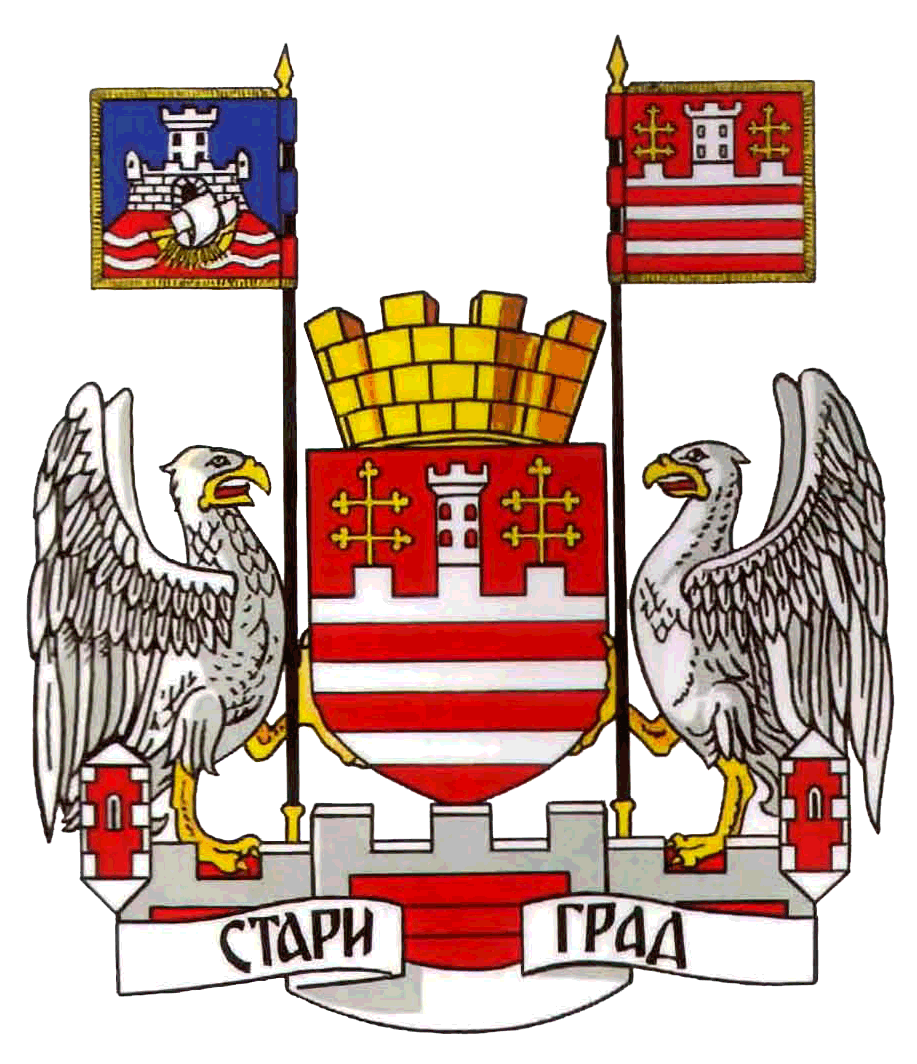
The heraldic achievement is a grand affair consisting of several component parts. The first is the arms themselves on the shield, surmounted by the helmet, the detail of which may change to denote the rank or degree of the armiger. On the helmet usually sits that other important heraldic accoutrement, the crest. Hanging from the top of the helmet is a loose piece of cloth known as the mantling. For the medieval knight this cloth once perhaps served to give some protection to the back of the helmet; in heraldry it is normally depicted in the main metal and color of the arms. The combination - of shield of arms, helm, crest, mantling and wreath - is the achievement of any armiger. For those of higher rank the full achievement can be much grander, with the shield supported by men or beasts; if the holder has a title, such as count or duke, the coronet of rank will also appear. In Britain the coronet sits above the shield, between it and the helm. In other nations the coronet might appear on the helm. 
Strictly, for the purposes of heraldry, the shield takes one of two forms. The first is the shield proper, which bears the arms of men, and the second is the lozenge, a diamond-shaped device used to display the arms of women. In fact, however, the shape of the heraldic shield varied considerably over the centuries and can reveal much about the period when it was used, and even the country of origin of the bearer. The tourney shield made its appearance in heraldry and, along with the heater shield, was often depicted as being tilted slightly on one side. There is nothing heraldically significant in this: along with all the fancifully shaped shields that appeared on paper and in architecture, it simply reflected the artistic style of the period in which it was used.
The true “heraldic” crest would seem to have taken shape a century or so after the advent of armorial bearings. Manuscripts from the 13th century sometimes show heraldic charges painted on the sides of knights’ helmets, and it has been suggested that the paint and lacquer used probably acted as an early form of rust-proofing. The crest helm was an elaborate affair that was further decorated with a large piece of cloth, secured to the top of the helmet by cords or other fastenings. In British heraldry this cloth helmet cover is called the mantling. Usually the mantling is bi-colored – its upper surface bearing the principal color in the arms and its underside the principal metal – although three or four colors may be employed, as is the case in Spanish and Portuguese heraldry. |
Heraldry Introduction | The Origin of Heraldry | The Law of Arms | the Coat of Arms | The Language of Heraldry | Color of Shield & Meaning | Symbolic Meaning
Home Disclaimer Contact Us


